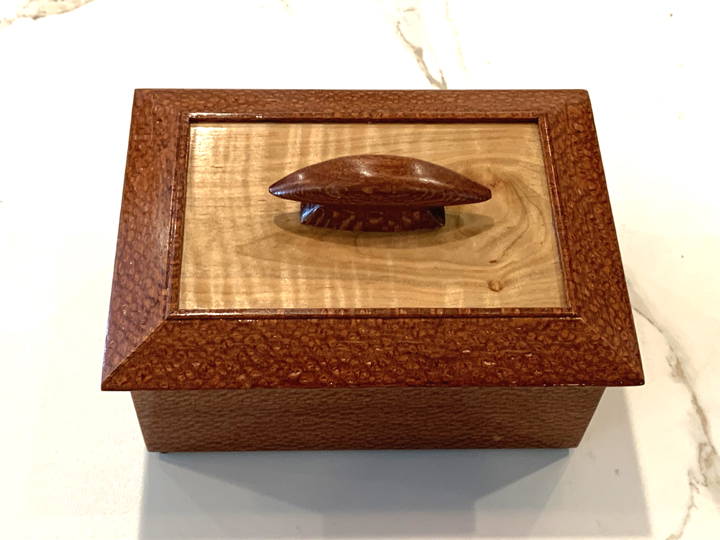

Leopardwood and Maple Box - 184


Measures 8.5" x 6 " x 5" tall. - $40
Leopardwood – Leopardwood is from trees that are native to Australia and Brazil. It is becoming difficult to obtain Australia Leopard Wood. The origins of both the Australian and Brazilian species were a single proto-species - possibly as far back as the times of Pangea. The wood is so named for the tightly-grouped flecks which cover its surface. It is almost exclusively quartersawn, which displays its dramatic flecking in leopard-spot-like patterns (thus, the name). It is medium to dark, reddish brown in color. Prior to being sanded, the flecked portion's slightly elevated positioning on the wood's surface gives it a true 3D look. It is fairly difficult to work and its uneven texture can cause tearout issues when boards are planed. The inherent decorative properties of Leopard Wood lumber make it a prized choice for veneer, cabinet making, furniture, musical instruments), and turned objects.
Maple Flame (Curly Maple, Tiger Maple, Fiddleback Maple, Rippled Maple) – Found in temperate regions in the Northern Hemisphere. The feature of maple in which the growth of the wood fibers is distorted in an undulating chatoyant pattern, producing wavy lines known as "flames". This effect is often mistakenly said to be part of the grain of the wood; it is more accurately called "figure", as the distortion is perpendicular to the grain direction. Prized for its beautiful appearance, it is used frequently in the manufacturing of musical instruments, such as violins and bassoons, and fine furniture. Another well-known use of the material is its use in guitars, especially the venerated Gibson Les Paul. The Gibson Les Paul "Standard", initially manufactured from 1958 to 1960, sported a flame maple top finished in a cherry-red sunburst on a mahogany body. Today, these instruments are some of the most prized on the vintage guitar market, and as such are unaffordable to most musicians.